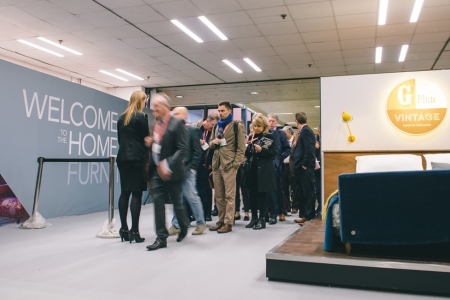As Black Friday approaches, consumers will be hoping for a bargain. Here, isobel planning director, James Appleby, advises furniture brands to resist short-term, low-hanging-fruit-driven tactics (and risk making a bargain of your brand), to think creatively, and to sow the seeds for a finer harvest in the long-term ...
You sell sofas. Or maybe it’s TVs. Or fridges, bikes, tables, beds and mattresses – anything that costs at least several hundred quid and quite possibly a few grand, that people use daily and keep for years.
And you’ve got a familiar problem – how do you sell the most you can, at the best price you can? And how do you do it while spending the least you can?
This isn’t a unique problem, but it’s a tricky one. These products are expensive, important, and vital to the smooth running of everyday life, but they don’t exactly scream “look at me!”
They’re not as dull as finance or utilities, but they’re not as frequent as FMCG. They sit awkwardly in a middle ground, and the usual marketing models don’t really fit.
Take the classic purchase funnel. What’s striking in this case is how much of the consumer journey isn’t a journey at all. Sure, you can draw a chart that starts with 'awareness' and ends with 'purchase' or 'recommendation', but it ignores the big, messy space outside the funnel – those years between purchases when the consumer is so far out of category any hope of converting them into a sale is beyond forlorn.
And that’s where things get tricky. If someone isn’t going to be in market for five years (and let’s face it, that’s fast for some categories), and the active part of their journey lasts just a few months – usually triggered by urgent need – then at any given moment, 95% of your potential customers aren’t paying attention.
Given this observation, you (or some other member of the executive team) might reasonably ask the question, "Why are we tossing money away in untargeted media? Most of the people we're reaching aren't in market. Why don't we fish where the fish are?! Go after the low-hanging fruit!"
Why indeed? Many years ago, a clever man named Jim Lecinski at a company named Google gave us the term 'The Zero Moment of Truth'. It was a riff on P&G's classic model and a cunning bit of marketing, as it suggested that the consumer journey started when someone typed something into Google (or Bing, if you're that way inclined). Anything else before that moment? Irrelevant. Well done, Jim.
And if you buy into this idea, everything else falls into place – find people who’ve left the relevant digital breadcrumbs, get in front of them fast, and stay there. They won’t be in market long, and there’s a big-ticket purchase on the line, so win it at all costs. Be No.1 on search, saturate their social feed, pay whatever it takes to stay there. Then, motivate the sale. And what motivates sales better than price? “30% off!”, “£100 Cashback!”, “BUNDLE DEAL!” etc.
The consumer buys. They feel like they got a deal, you hit your sales target, and Alphabet and Meta shareholders pop champagne.
Everyone wins. You’ve fished where the fish are, picked the low-hanging fruit, and you’re a genius. Article finished.
Except – one question... how much is your product worth?
Sure, you know what it costs to make, distribute, and market, but that’s not the same as what it’s worth. Worth is defined by what a consumer is willing to pay. And if the first price the consumer sees is a discount, that discount becomes their anchor. “I’m being asked to pay £500? Okay, I guess it's worth £500, tops.”
And if that's how much it's worth, and that's how much it's on sale for – then that's not a deal. And if there's no marginal value there for the consumer to be motivated by, then we just gave up maybe 70% of our own margin for nothing.
And that’s where things start to unravel. Discounts can't drive urgency if they're what set price expectations. And those laser-focused ads? They’re now just part of the noise, lost in a sea of identical offers. You’re on the consumer's radar, sure – but so is everyone else. The radar is jammed.
This whole 'fish the low-hanging fish' approach might look efficient on paper, but in practice it fails.
Why? Because it's looking at the problem from the business' point of view. It doesn't see things from the consumer's perspective. It doesn't set the consumer up to think, “£500? For that? Wow!”
Because the fact that 95% of your consumers aren’t in market is actually your big opportunity. While everyone fights for the fruit of the 5%, you have room to plant your seeds in the 95% of uncontested space.
Be creative, not for its own sake, but because it will help your brand burrow deep into the dry dust of their brain and stay there, waiting for the rains to come. They won’t remember specifics, so don’t sell them specifics. Make an impression. This audience doesn’t care much about what you have to say, so make it entertaining. They won’t act now, so don’t ask.
A business that doesn’t do the necessary brand groundwork in the long fallow periods between purchases is like a student who crams the night before an exam. If your measure of success is scraping by, then maybe that’s good enough. But if you want to win, you have to put in the yards and the years.
So, focus on building your brand while your competitors are busy playing whack-a-mole with short-term wins, and you’ll be in a much better position long-term.
When a consumer finally comes round to become one of the 5% actively in market – and they hit the zero moment of truth and officially begin their purchase journey – they already know you. They’ll notice your offer amidst the clutter. They’ll have a sense of what you’re worth, and they’ll see that your price is lower than they expected. They’ll also have an idea of why you’re different, and why you might be right for them, even if you’re not the absolute cheapest at the moment.
In other words, good business requires that you build your brand with the silent majority, even if it looks like you're missing an opportunity by not spending everything maximising on the obvious 5%.
Or, to stretch and scramble the metaphor just a little bit, if you want to fish the low-hanging fish, start by planting where the plants aren’t.













